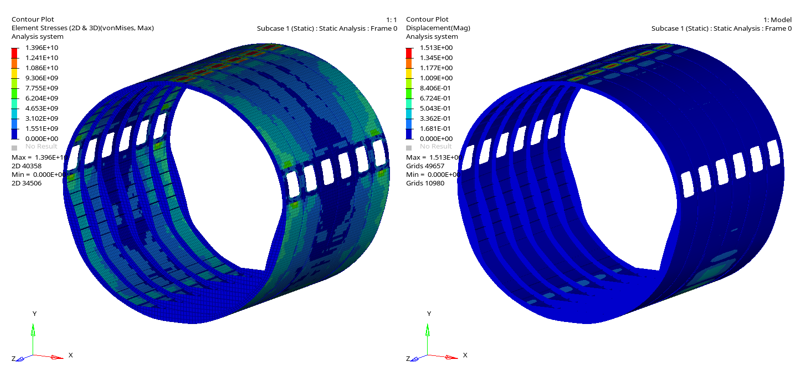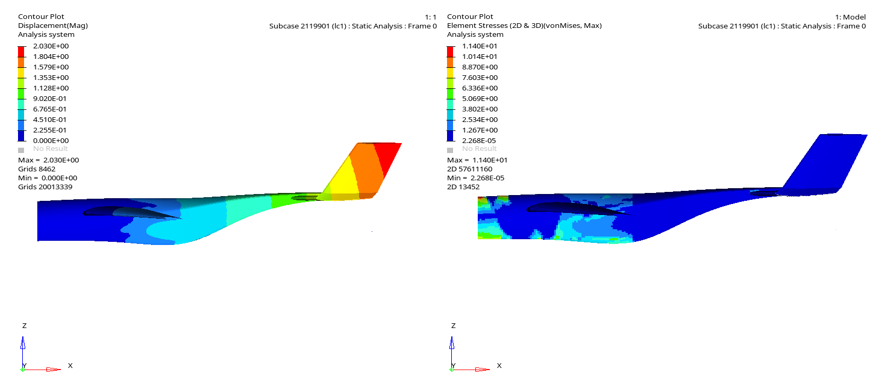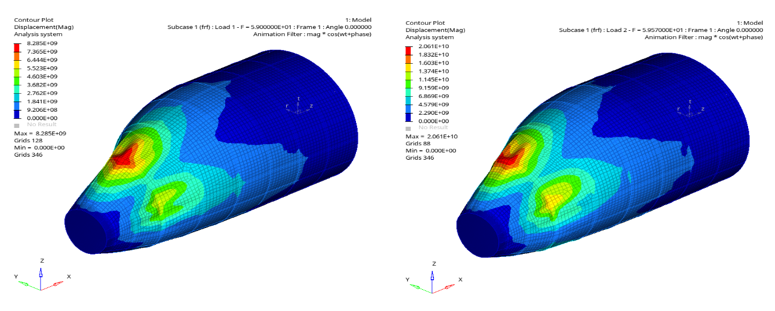Solution Sequences
OptiStruct can be use different solution sequences for aircraft analysis.
- Type
- Description
- STATICS
- Linear Static or Nonlinear Static Gap Analysis
- MODES
- Normal Modes Analysis
- BUCK
- Linear Buckling Analysis
- DFREQ
- Direct Frequency Response Analysis
- LGDISP
- Large Displacement Nonlinear Static Analysis (available as PARM card entry)
- HEAT
- Linear Steady-state or Transient Heat Transfer Analysis
- FATIGUE
- Fatigue Analysis
Static Analysis

Figure 1. Stress and Displacement Contours for Static Analysis of a Fuselage Section
For further information, refer to Linear Static Analysis.
Nonlinear Static Analysis
- Material nonlinearities
- Geometric nonlinearities
- Presence of nonlinear forces
- Contact nonlinearities
Inertial Relief Analysis
- PARAM, INREL, -1 is used when certain boundary conditions are specified.
- PARAM, INREL, -2 is used when no boundary conditions are specified.

Figure 2. Displacement and Stress Contours for Inertia Relief Analysis
Figure 2 shows the results from an Inertia Relief Analysis performed on a fuselage model.
Normal Modes Analysis
- Under constrained and loose components
- The rotating speed which matches the natural frequencies in case of the analysis of a blade or a rotor
- The areas to be constrained or loaded.

Figure 3. Normal Modes Analysis of a Fuselage and Drone
Figure 3 shows the results from the Normal Modes Analysis for a fuselage and a drone. Both models have free-free boundary conditions.
Frequency Response Analysis

Figure 4. Frequency Response Analysis of a Fuselage Section
Model File
Refer to Access the Model Files to download the required model file(s).
The model file used here includes:
Fixedwing_modal.fem